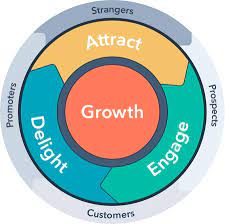 2 min
2 min
As a scaling company, one of your most critical tasks is developing a robust go-to-market (GTM) strategy. This strategy defines how you will sell your product or service to customers, and it encompasses everything from identifying your ideal customer to aligning your marketing, sales, and customer support efforts. This blog post will guide you through the process of developing your first GTM strategy, with a focus on defining personas, creating a messaging matrix, and measuring success.
Defining Your Ideal Customer Profile (ICP), Key Stakeholders, and Personas
Your ICP, stakeholders, and personas are the foundation of your GTM strategy.
Ideal Customer Profile (ICP): Your ICP is a detailed description of the company or individual who would get the most value from your product or service. This might include details about industry, company size, budget, geographical location, and more.
Key Stakeholders: These are the individuals within your ICP companies who are involved in the purchasing decision. They might include executives, end users, influencers, and financial decision-makers.
Personas: Personas are detailed descriptions of the typical individuals who will be using your product or service. They include demographics, job roles, goals, challenges, and other relevant details.
Creating a Messaging Matrix
Once you've defined your ICP, stakeholders, and personas, the next step is to develop a messaging matrix. This matrix outlines the key messages you want to communicate to each group, tailored to their unique needs and perspectives. It includes the value proposition, key features, benefits, and differentiation points for each persona or stakeholder.
The Marketing Side of GTM
The marketing component of your GTM strategy involves creating awareness and generating demand for your product or service. This might involve content marketing, SEO, paid advertising, social media, and events, among other tactics. Your goal is to attract and nurture leads until they are ready to engage with your sales team.
The Sales Side of GTM
Once leads are ready to engage, the sales component of your GTM strategy takes over. This might involve automated cold outreach using HubSpots Sequence tool, manual outreach using HubSpots prospecting tools (video, email, phone, documents, snippets, and playbooks.
Make sure your team understands the sales process inside and out, has a strong understanding of MEDDICC, and knows how to do the basic "blocking and tackling" tasks such as demos, proposals, negotiations, and actually closing the deal. The goal is to get to a "yes" or a "no" as quickly as possible, then convert those "yess's" into paying customers.
The Customer Success Side of GTM
Once customers have made a purchase, the customer success component of your GTM strategy comes into play. This involves providing ongoing support, answering questions, resolving issues, and ensuring that customers are successful with your product or service. This stage is crucial for customer retention and upselling. Make sure your handoffs between sales and success are well defined and well adopted!
Measuring GTM Performance
A critical part of your GTM strategy is measuring its performance. Key metrics might include lead generation, conversion rates, customer acquisition cost, customer lifetime value, sales velocity, average deal size, sales cycle, retention rates, and customer satisfaction scores. Regularly review and adjust your strategy based on these metrics to continuously improve.
What Does Success Look Like?
A successful GTM strategy results in a steady stream of qualified leads, a high conversion rate, satisfied customers, and profitable growth. It ensures that your marketing, sales, and customer support efforts are aligned and working together to deliver a seamless customer experience.
In conclusion, developing a robust GTM strategy is a complex but essential process for scaling companies. By taking the time to define your ICP, stakeholders, and personas, create a messaging matrix, align your marketing, sales, and customer support efforts, and measure your success, you can set your company up for sustainable growth.
Related blog


 1 min
1 min
Mastering the Sync Between HubSpot and Salesforce: A Guide for RevOps Leaders

 2 min
2 min
Unleashing the Power of MEDDICC in HubSpot: A Guide for Scaling Companies
There's a better way to do RevOps
Revenue Operations doesn't have to be hard - Reach out and let's start mapping your path to more successful outcomes.
 BLAKE BROCK
BLAKE BROCK
 Aug 10, 2023
Aug 10, 2023
